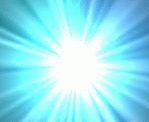 AAVSO NEWS FLASH No. 3
AAVSO NEWS FLASH No. 3
(vsnet-obs 2384, Eric Broens)
Observer : Eric Broens, Mol, Belgium
[VVS Belgium, variable star section]
Internet: ebroens@innet.be
UV Per Mar. 14.836 11.9 Seq: AAVSO
Kind Regards, Eric
UV Per [UGSU, 11.0v - 17.5v] ============================
Eric Broens, Mol, Belgium has informed us about his detection of an outburst of UV Per. We have been able to confirm his observation. Details :
1996 Mar 13.824 UT, [14.1 (E. Broens, 0.35-m refl., seq: AAVSO);
Mar 14.836 UT, 11.9 (E. Broens);
Mar 14.882 UT, 12.1 (T. Vanmunster, 0.35-m refl., seq: AAVSO);
The previous outburst of UV Per was detected by Bill Worraker, UK on March 20, 1995. This was a normal outburst, during which the object reached mag. 12.5. The last superoutburst of UV Per was seen on May 29, 1994 by T. Vanmunster, Belgium [CVC 4]. The corresponding light curve is available on the Cataclysmic Variables Home Page.
Tonny Vanmunster
Followed by a rapid fading, UV Per brightened again as notified by J. Mattei of AAVSO.

(real-time light curve from vsnet-obs observations)


Visual observations of superhumps in 1989 (VSOLJ data)

Normal outburst in 1996 March (VSNET data)

The 1992 superoutburst, CCD photometry
(presistent superhumps and prominent QPOs during the rapid decline, data
taken at Ouda Station)
(drawn from GSC)


Wide-field chart

Close-up chart

Close-up more
(vsnet 267, Brian SKiff)
Patrick Schmeer, among others, has pointed out that various comparison sequences for UV Persei show considerable differences. I have made a quick check on four stars appearing on the AAVSO (f)-scale chart dated Dec 1992, which includes unpublished photoelectric photometry by R. Stanton reaching beyond mag. 16. I could reliably observe only the brighter stars, but these serve to confirm the zero-point and scale of the Stanton results, at least in the range where the variable is in outburst. The AAVSO magnitudes are given in the first column of the table below.
The only other published photometry I can find is by Howarth and Bailey (JBAA 90,265). Their V magnitudes are given in the rightmost column below. The authors admit to having some problems with this particular set of data, but suggest the errors are no larger than 0.2 mag. below mag. 12. However, as can be seen, the values are systematically too faint by about one-half magnitude. The UBV colors given in the paper (omitted here) also show serious problems. The results by Howarth & Bailey are best ignored for this field. Are these what's been used on the BAA chart?
Since my results are based on single observations, the numbers for the two fainter stars aren't particularly reliable, but should be good to +/-0.03 or so. It would be nice to see the Stanton results published, or perhaps posted on the AAVSO Web page, if only so we can see a second decimal, and to have some idea of the errors involved.
For what it's worth, the GSC magnitudes seem to match V fairly closely in this area. \Brian
Photometry of stars in the field of UV Persei
AAVSO Name RA (2000) Dec V b-y H&B
V
101 GSC 3693-1720 2 10 13.4 +57 11 25 10.089 0.337 10.58
108 GSC 3693-2068 2 09 56.2 +57 13 59 10.946 0.113 11.72
126 GSC 3693-1862 2 10 10.2 +57 13 56 12.697 0.241 13.19
136 GSC 3693-2240 2 10 02.1 +57 11 11 13.607 0.252 14.09
 Related Short-Period Systems
Related Short-Period Systems
 Return to Daisaku Nogami's page
Return to Daisaku Nogami's page
